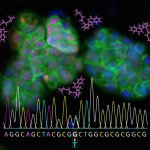
News • Promising study results
Cancer of Unknown Primary: on the way to targeted therapies
Metastases, but no sign of the original tumor: A large international study shows how this phantom cancer can nevertheless be treated.

Metastases, but no sign of the original tumor: A large international study shows how this phantom cancer can nevertheless be treated.

Avian flu, MERS, Covid-19, monkeypox: outbreaks of infectious diseases are getting more common in Europe. As a result, the EU must adapt its surveillance strategies and introduce more data-driven, interdisciplinary countermeasues.

A new type of vaccine provides protection against a variety of SARS-like betacoronaviruses, including SARS-CoV-2 variants, in mice and monkeys, according to a new study.
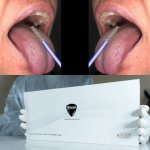
Compared to previous SARS and MERS, SARS-CoV-2 became a pandemic due to the high infectivity and different mode of contagion. SARS-CoV-2 spreads more because it is contagious also before symptoms, during incubation phase. No tests to date have been able to find the virus during the pre-symptomatic stage. Stark has developed a new, rapid, non-invasive method "Stark Portable Covid-19 Antigen…
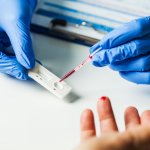
Considerable advances in point-of-care testing (POCT) devices are emerging from lab-on-a-chip platforms, innovations in smartphone-based technology and wearable technology. Cloud-based deep learning systems herald a future revolution.
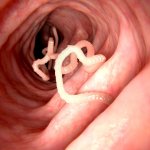
Researchers from the German Center for Infection Research (DZIF) at Charité – Universitätsmedizin Berlin and the University of Bonn have examined the way in which SARS-CoV-2 reprograms the metabolism of the host cell in order to gain an overall advantage. According to their report in Nature Communications, the researchers were able to identify four substances which inhibit SARS-CoV-2…
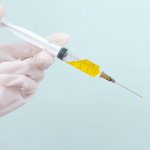
When a cell is infected, SARS-CoV-2 not only causes the host cell to produce new virus particles. The virus also suppresses host cell defence mechanisms. The virus protein nsP3 plays a central role in this. Using structural analyses, researchers at Goethe University in cooperation with the Swiss Paul Scherrer Institute have now discovered that a decomposition product of the virostatic agent…
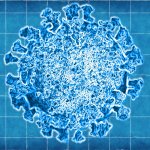
Scientific and public health experts have been raising the alarm for decades, imploring public officials to prepare for the inevitability of a viral pandemic. Infectious epidemics seemingly as benign as "the flu" and as deadly as the Ebola virus provided ample warning, yet government officials seemed caught off guard and ill prepared for dealing with Covid-19.

Global greenhouse gas emissions over the last century have made southern China a hotspot for bat-borne coronaviruses, by driving growth of forest habitat favoured by bats. A new study published in the journal Science of the Total Environment provides the first evidence of a mechanism by which climate change could have played a direct role in the emergence of SARS-CoV-2, the virus that caused the…
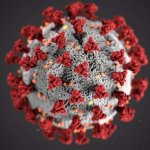
Researchers at Vanderbilt University Medical Center (VUMC) and the University of Texas Medical Branch (UTMB) at Galveston have discovered what may be the Achilles' heel of the coronavirus, a finding that may help close the door on COVID-19 and possibly head off future pandemics.
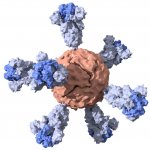
Before the pandemic, the lab of Stanford University biochemist Peter S. Kim focused on developing vaccines for HIV, Ebola and pandemic influenza. But, within days of closing their campus lab space as part of Covid-19 precautions, they turned their attention to a vaccine for SARS-CoV-2, the virus that causes Covid-19. Although the coronavirus was outside the lab’s specific area of expertise,…
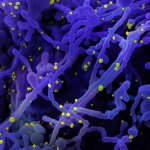
As President Trump claims that he is immune to COVID-19 and isolated reports emerge of reinfection, what is the truth about immunity to COVID-19? To date, there have been six published cases of COVID-19 reinfection, with various other unverified accounts from around the world. Although this is a comparably small fraction of the millions of people known to have been infected, should we be…

Our immune system can efficiently fend off viral diseases. Two types of immune cells play an important role in this process: The T-cells, which firstly can directly destroy virus-infected cells and secondly enable the formation of efficient, virus-neutralizing antibodies by B-cells. These two cell types also play a crucial role in the immune defense against SARS-CoV-2 infection. Whereas antibody…

Surface disinfection has proved an effective method to control Covid-19 infection, as virologists from the Ruhr University Bochum (RUB) have shown. However, an effective disinfection strategy against Coronavirus must consider various factors, says Professor Eike Steinmann, head of the Department of Molecular and Medical Virology at the RUB.
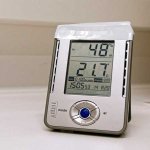
The airborne transmission of the coronavirus SARS-CoV-2 via aerosol particles in indoor environment seems to be strongly influenced by relative humidity. This is the conclusion drawn by researchers from the Leibniz Institute for Tropospheric Research (TROPOS) in Leipzig and the CSIR National Physical Laboratory in New Delhi from the analysis of 10 most relevant international studies on the…

Although the clinical symptoms of new pediatric lung disorders such as severe acute respiratory syndrome (SARS), swine-origin influenza A (H1N1), Middle East respiratory syndrome (MERS), e-cigarette or vaping product use-associated lung injury (EVALI), and coronavirus disease (COVID-19) pneumonia may be nonspecific, some characteristic imaging findings "have emerged or are currently…
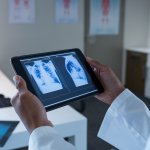
Coronavirus can be identified automatically from sick patients’ lung X-rays using artificial intelligence (AI) developed at Brunel University London.

Scientists at the University of Alberta have shown that the drug remdesivir is highly effective in stopping the replication mechanism of the coronavirus that causes COVID-19, according to new research published in the Journal of Biological Chemistry.

Any new coronavirus vaccine that works well and is safe will still have the daunting challenge of needing to be produced to scale in a very short amount of time. It will also have to be safely delivered into the hands of the most remote populations. The more complex and untested the vaccine approach, the more difficult it will be to both scale its production and deliver it around the world. By…
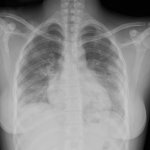
Chest X-ray is the first imaging method to diagnose COVID-19 coronavirus infection in Spain, but in the light of new evidence this may change soon, according to Milagros Martí de Gracia, Vice President of the Spanish Society of Radiology (SERAM) and head of the emergency radiology unit at La Paz Hospital in Madrid, one of the hot spots for viral re-production of COVID-19.
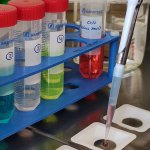
How long can coronavirus persist on surfaces such as door handles or hospital nightstands? How can the virus be destroyed effectively? A research team from Greifswald and Bochum, Germany, collected the answers scientists can currently offer to these and other pertinent questions and published them in the Journal of Hospital Infection.
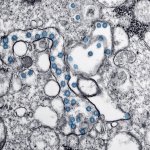
Biotechnology company bioMérieux, a world leader in the field of in vitro diagnostics, is announcing the forthcoming launch of 3 different tests to address the COVID-19 epidemic and to meet the different needs of physicians and health authorities in the fight against this emerging infectious disease. bioMérieux has finalized the development of the SARS-CoV-2 R-Gene test. This real-time PCR test…

The novel coronavirus that recently originated in Wuhan, China has grabbed headlines and caused concern among public health officials around the world. Two infectious disease experts share their insights on the novel coronavirus epidemic.
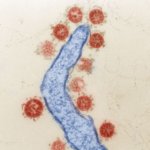
Nine people have died and more than 400 have been sickened by the new corona virus spreading in China. A few cases have been confirmed in Taiwan, Thailand, South Korea, Japan and the U.S., and on Wednesday, the World Health Organization is holding an emergency meeting on the outbreak. How worried about a new pandemic should we be? Virus researcher Ali Mirazimi, adjunct professor at the Department…

Cancer of unknown primary (CUP) can send radiologists on a frustrating scavenger hunt: metastases were detected but the primary cancer is nowhere to be seen. Professor Alwin Krämer, Head of the Clinical Cooperation Unit Molecular Haematology/Oncology at University Hospital Heidelberg and the German Cancer Research Center, explains strategies for dealing with CUP.

With a case fatality rate of 35 percent, a Middle East respiratory syndrome-related coronavirus (MERS-CoV) infection – also called camel flu – is a dangerous disease. About seven years ago, when the virus was first isolated, mortality was close to 100 percent since only severe infections that led to the patient being in intensive care were recorded. Today the environment of each victim is…

The safety of blood transfusions is questioned again and again by the mass media. Sometimes ‘bad’ blood causes infections; sometimes a transfusion leads to cancer years later. The fact is that transfer blood is subjected to the highest safety standards – there are very clear statutory regulations. Nonetheless, there will be shortages of ‘life’s fluid’ because, given increasing…

A recently identified pig virus can readily find its way into laboratory-cultured cells of people and other species, a discovery that raises concerns about the potential for outbreaks that threaten human and animal health. Researchers at The Ohio State University and Utrecht University in the Netherlands collaborated to better understand the new virus and its potential reach. Their study, the…
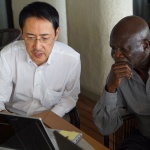
In a comprehensive and complex molecular study of blood samples from Ebola patients in Sierra Leone, published in Cell Host and Microbe, a scientific team led by the University of Wisconsin–Madison has identified signatures of Ebola virus disease that may aid in future treatment efforts. Conducting a sweeping analysis of everything from enzymes to lipids to immune-system-associated molecules,…

The ‘Transmission, Prevention, and Reporting of Emerging Infectious Diseases’ program for the International Conference IMED 2016 in Vienna, this November, reflected events in the field of emerging diseases that have occurred over the last two years. Therefore, key congress topics included the Zika virus, the effects of global warming and the unusually high number of hospital-acquired…

The ‘Transmission, Prevention, and Reporting of Emerging Infectious Diseases’ programme for the International Conference IMED 2016 in Vienna, this November, reflected events in the field of emerging diseases that have occurred over the last two years.

Humabs BioMed SA and the Institute for Research in Biomedicine (IRB) affiliated to the Università della Svizzera italiana announced the identification, isolation and characterization of two Ebola virus neutralizing monoclonal antibodies from the blood of a survivor of an Ebola infection.

Since 2012, at least 1,500 individuals have developed Middle East respiratory syndrome (MERS), resulting in more than 500 fatalities. Only now are results being reported of the first autopsy of a MERS patient, which was performed in 2014. Not only do these findings, published in The American Journal of Pathology, provide unprecedented, clinically-relevant insights about how MERS progresses, they…

MRSA is bad news. If you've never heard of it, here's what you need to know: It's pronounced MER-suh, it's a nasty bacterial infection and it can cause serious disease and death. Senior molecular biology major Jacob Hatch knows MRSA as the infection that took his dad's leg.

As the South Korean epidemic of Middle East Respiratory Syndrome (MERS) continues unabated, researchers have raced to find treatments for the deadly virus, which has killed more than 400 people since it was first discovered three years ago in Saudi Arabia.

Health always has a political dimension, as seen at two recent international events - the World Health Summit in Geneva in May and the G7 Summit in the Bavarian Alps near Garmisch at the beginning of June. Report: Anja Behringer

The European Society of Clinical Microbiology and Infectious Disease (ESCMID) announces that the globe’s most prominent infection specialists will be gathering in Copenhagen to explore solutions to the biggest infection problems during its annual congress – the 25th European Congress of Clinical Microbiology and Infectious Diseases (ECCMID) taking place on 25-28 April 2015.

“The Saudi Arabian government’s response to the new virulent Middle Eastern Respiratory Syndrome (MERS) has recently been criticized, following high-level dismissals within the Saudi state healthcare service. Criticism has been leveled at the slowness of the government’s response to the outbreak, as well as in-fighting between physicians", says Andrew Thompson, Ph.D., GlobalData’s…

The World Health Organisation (WHO) recently formed an international emergency committee to decide whether Middle East Respiratory Syndrome Coronavirus (MERS-CoV) should be ascribed Public Health Emergency of International Concern (PHEIC) status, amid reports of a lack of information from the worst affected countries.

Shaken by two medical implant scandals, France is scrambling to rebuild confidence in its system of medical products and medication surveillance, John Brosky reports

Toshiba's pre-opening ECR event on Wednesday evening attracted around 120 radiological experts who wanted to learn more about the company's technology in daily practice. Toshiba invited several highly-regarded radiologists and cardiologists from Austria and Germany who not only presented the diagnostic possibilities of the firm's products offers, but answered critical questions asked by the…